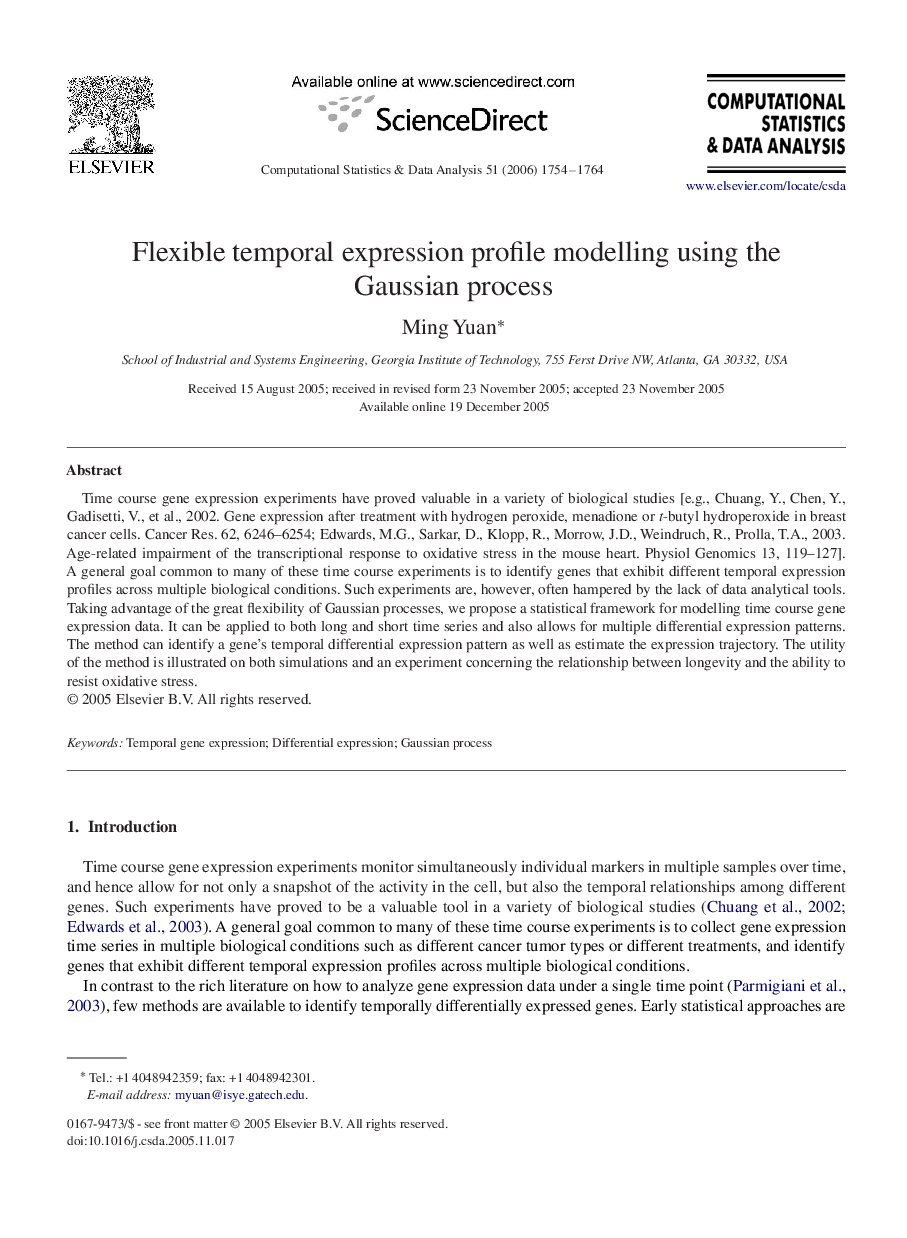| Article ID | Journal | Published Year | Pages | File Type |
|---|---|---|---|---|
| 416673 | Computational Statistics & Data Analysis | 2006 | 11 Pages |
Time course gene expression experiments have proved valuable in a variety of biological studies [e.g., Chuang, Y., Chen, Y., Gadisetti, V., et al., 2002. Gene expression after treatment with hydrogen peroxide, menadione or t-butyl hydroperoxide in breast cancer cells. Cancer Res. 62, 6246–6254; Edwards, M.G., Sarkar, D., Klopp, R., Morrow, J.D., Weindruch, R., Prolla, T.A., 2003. Age-related impairment of the transcriptional response to oxidative stress in the mouse heart. Physiol Genomics 13, 119–127]. A general goal common to many of these time course experiments is to identify genes that exhibit different temporal expression profiles across multiple biological conditions. Such experiments are, however, often hampered by the lack of data analytical tools. Taking advantage of the great flexibility of Gaussian processes, we propose a statistical framework for modelling time course gene expression data. It can be applied to both long and short time series and also allows for multiple differential expression patterns. The method can identify a gene's temporal differential expression pattern as well as estimate the expression trajectory. The utility of the method is illustrated on both simulations and an experiment concerning the relationship between longevity and the ability to resist oxidative stress.
